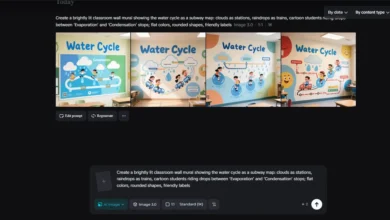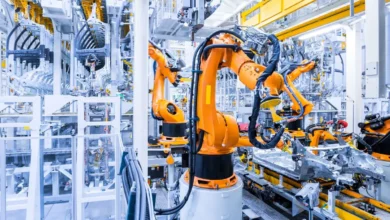
Imagine a construction site where accuracy, speed, and efficiency are the new rules of building construction. The technology of laser welding is fast changing the construction sector, with novel solutions they provide that can not be compared to the old ways of doing things.
The fact is that the more people find this innovation to be useful, the more it transforms structural integrity, project schedules, and more.
You will learn about how the incorporation of laser welders in job sites is transforming building. Find out the advantages, problems, and possibilities of this technology for the future of the industry.
But you might be a contractor, an architect, or just interested in the latest high-tech progress: with this, you are on your way to exploring the next giant step in construction.
Benefits Of Integrating Laser Welders In Construction
Incorporation of laser-welders in the construction presents an improvement in terms of performance and quality. Such advantages include accuracy, longevity, and the effects in the long term (financial).
Improved Precision And Efficiency
Laser welders also allow control that no other welder can provide, making perfect and productive welds. The accuracy reduces the gap in the connection of the component, so there is a reduced post-weld adjustment.
The accelerated welding speeds apply to construction projects. Works that are done within shorter periods raise efficiency.
When welding steel reinforcements or an aluminum frame, the multiple processes can be made fast without grinding down any quality, especially with an industrial laser welder that focuses on the elaborate fabrication.
Features of automation also make tedious work even smoother. Automated laser welding enhances repetition in high-throughput applications, including the creation of prefabricated modular components.
Enhanced Durability And Strength
Laser-welded structures are very structurally sound. They do not have many defects like porosity or inclusions as compared to the traditional ways of welding.
Material properties are maintained by reducing thermal distortions. Steel panels or the titanium fixtures do not change strength and form in heated settings.
The laser welders can be set to different metals, and there is a strong bond between hybrid materials. As an example, the connection of aluminum and steel in an accurate manner can avoid weak areas and make the collected arrangement more reliable.
Cost-Effectiveness Over Time
The costs of initial investment in terms of laser welding systems are much higher, but are compensated by operational savings in a short period. Minimum amounts of materials used and less energy translate to significant savings.
Fewer hours of work are required because of the high accuracy of welds, meaning that there are fewer labor costs. Take the case of large-scale projects, e.g., skyscraper framework installations, the delays and errors involved are reduced in number.
Laser equipment has low maintenance requirements. At the same time, savings together with the prolongation of equipment lifespan compensate for initial costs to the industries that deal with continuous operations.
Challenges And Limitations
Laser welding technology opens up new avenues to construction, but it does not come without challenges to be met on the job sites. Some areas need to be subject to critical analysis to ensure implementation.
Initial Investment And Training
Capital requirement of tooling laser welding systems poses a serious challenge to the high entrance criteria.
The type of equipment to be used, the fiber or the CO2 lasers, can cost between 50,000 and 500,000, depending on its power output, automated components, and other auxiliary items included.
Costs of training staff add to the costs. Technicians should have skills in laser optimizations, beam calibrations, and laser safety.
The knowledge of traditional welding fails to transfer completely to laser operations that need detailed control. Operator certification programs might extend to a few weeks, meaning that operators will take a long time to onboard.
Standards of training are required to prevent misuse that can lower the effectiveness of welds or even destroy equipment, which will affect precision and durability.
Adaptation To Varying Materials
Welding using lasers is efficient on materials. Scatterer metals, e.g, aluminum and copper, that scatter laser energy reduce the efficacy of the whole process.
Surface finishes and coatings increase further absorption, whereby preparation before welding is required to have consistency.
Differences in thickness also introduce new restrictions. Although fiber lasers are good with thinner materials, they can not penetrate workpieces above 8mm without using advanced power modules.
Partial offset of these drawbacks is provided by hybrid systems that incorporate both laser and arc welding, but whose total implementation complexity is greater.
Another dimension is achieved by getting quality bonds with composite materials. It can be shown that to join incompatible metals, including steel and titanium, it is necessary to determine the highly accurate parameter settings regarding heating and cooling rates.
Innovations Driving The Future Of Laser Welding In Construction
Applications of laser welding in building constructions are constantly evolving with the emergent technologies. Its advances revolve around the expansion of portability, cooperation with robotics, and the reduction of the limitations to operations.
Advancements In Portable Laser Welders
The flexible laser welders are becoming more and more portable on the jobsite. The portable lightweight equipment enables an operator to make accurate welds without moving materials to an established station.
Handheld fiber laser welders with power outputs ranging between 1000W and 1500W are models well suited to on-site jobs that expose the welders to the need to be accurate and speedy.
Companies such as Denaliweld have played a major role in the development of this breeding, having created user-friendly, high-performance systems perfectly designed to work in field conditions.
Laser welders that use batteries remove power grid constraints at remote locations, and the air-cooled devices therefore eliminate thermal buildup in altered weather.
Preset parameters and the ability to change the intensity on intuitive touch screens in real-time make on-site adjustments fast and painless.
Auto-focus nozzle sets the beam shape automatically to the best possible penetration, so no manual recalibration needs to be done by the user, and the possibility of error goes down. The combination improves reliability and ensures the continuity of production in an off-grid challenging environment.
Integration With Automation And Robotics
Laser welding is now combined with fixed robot arms to make repetitive, precise welds, cobots that learn and improve along with human workers, and AGVs that move weld units around construction sites as dashboards monitor progress remotely.
This technology uses high-speed sensors to synchronize robot movement and beam control, reducing the time taken in processes by about 20 percent, and fulfilling contemporary construction requirements.
Potential Impact On The Building Industry
The laser welding technology, a technology that is precise and flexible, is changing the roles and processes in the construction industry. Its fusion is indicative of changes in everyday operations and the expansive concerted effort toward eco-friendly construction techniques.
| Area of Impact | Key Points |
| Transforming Workflows On The Job Site | On-site laser welding with robots and AGVs accelerates assembly, repairs, and prefabricated installs while preserving precise, high-quality joints. Integrated monitoring enables operators to adjust patterns remotely for mixed materials, ensuring consistency without requiring the movement of large structures. |
| Shaping Sustainable Construction Practices | Focused laser energy reduces waste and power use while creating durable hybrid joints that cut transport and rework emissions. Clean, additive-free welds simplify recycling at the end of life and help projects earn green certifications. |
Conclusion
Combination of laser welding technology is reshaping the construction of buildings. The fact that it can provide precision, speed, and flexibility meets the increased needs of efficiency and sustainability in current projects. You can make a breakthrough by adopting portable units, automation, among others, to improve efficiency and achieve high outcomes in a regulated workflow.
Though there are problems such as the initial cost and the need for training, the costs are well worth it in the long run. Laser welders are not only tools, but they are also innovation pushers, helping the construction industry to become more intelligent and environmentally friendly.

















